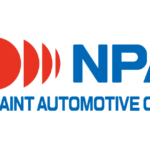With DimoMaint MX, the group gains a comprehensive view of its maintenance
for its new production site

NPAC (CA +10 billion USD, 34,000 employees, 150 factories worldwide, partners such as Stellantis, Toyota, Mercedes…) specializes in automotive coatings for manufacturers (OEM), body paints, plastics, interior/exterior through sustainable innovation (low emission formulas). The group is established in Asia, Europe, the Americas, and Oceania / MENA. The maintenance of NPAC’s former production site was outsourced. Although they had the MiniMaint solution, the provider did not use it. Without data, it was impossible to track or have a comprehensive view of maintenance. Elvis Tombandoki, maintenance engineer, learned from the implementation of DimoMaint MX on the new production site and shares his practical and operational vision of a significant challenge: getting the adoption of a modern CMMS.
Before deploying the CMMS, it was impossible to have a comprehensive view of maintenance
NPAC is subject to the IATF 16949:2016 standard for automotive paint, but in this context, managing the 71 regulatory controls proved to be deficient. Maintenance processes were not robust, and there was no stock tracking. Finally, tracking maintenance indicators – required by the IATF standard – was a very time-consuming exercise, requiring 4 hours of weekly work on an Excel file. With the arrival of the new production site south of Paris, it was decided to migrate to a more ergonomic CMMS 4.0 to produce up-to-date and real-time indicators. Moreover, compliance with the IATF standard requires the structuring of all assets, as well as tracking interventions and defining asset criticality within a comprehensive maintenance strategy.
Implementation facilitated by management sponsorship
The benchmark conducted by Elvis Tombandoki was based on three criteria that DimoMaint perfectly met:
- Improvement of intervention tracking,
- The ability to access indicators,
- Meeting user expectations and knowledge
With the support of the site director for the migration to the new CMMS and thus improving the robustness of the Maintenance service, Elvis Tombandoki was also able to rely on maintenance technicians and external providers who had in-depth knowledge of the machines and maintenance instructions. The choice of the DimoMaint solution by Mr. LEPEME Francis allowed covering the entire functional scope of the solution, except for purchases, as the service had a tool for this purpose. The deployment took about 12 months to populate the CMMS, commission it, use it, and deploy it internationally, notably in Germany.
Field needs met
The structure is based on a geographical approach based on the company’s layout plan: “We created codes on our assets to recall the site and building where we are located. We were able to implement monthly, semi-annual, and annual preventive maintenance, and our interventions are triggered automatically. Requesters can now very easily and quickly (2 minutes flat!) make work requests. The process is facilitated with SSO connection to DimoMaint,” explains Elvis Tombandoki, who adds that profile customization brings a real “plus” in supervision mode to decide what the person can see or not.
In the end, technicians benefit from a complete solution that perfectly meets their needs: “They notably have knowledge of spare parts and access to various documents via ATEX mobiles. Moreover, they can very easily enter the actions to be performed in the CMMS. Being trained on the CMMS represents a real added value for them.”
Analyses via Power BI
Furthermore, the increase in maturity allowed for statistical studies to meet regulatory constraints. The IATF standard requires showing the number of work orders generated annually, those that have been processed, or are being processed. “We also had the MTBF/MTTR. We therefore had to retrieve the data in DimoMaint to build our own indicators via Power BI. We are now in line with the IATF standard and have the total number of interventions as well as the number of closed corrective, preventive, and regulatory interventions, and we can analyze the most complex intervention times. All this was made possible after entering the correct data into the CMMS. We can attest to the reactivity of the maintenance teams and customer satisfaction via API related to the interventions carried out,” estimates Elvis Tombandoki.
After five years of use, projects abound
NPAC will continue deploying the solution in the Czech Republic. “As we can now rely on a significant volume of data, we want to conduct more in-depth analyses on maintenance ranges, with the aim of having an even more strategic view to implement action plans on all European sites,” explains Elvis Tombandoki.




